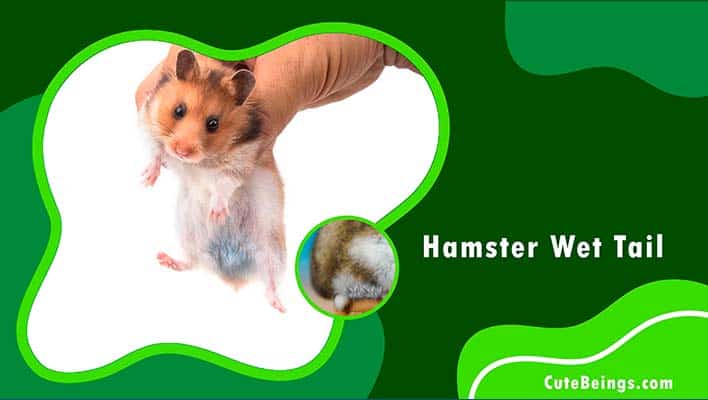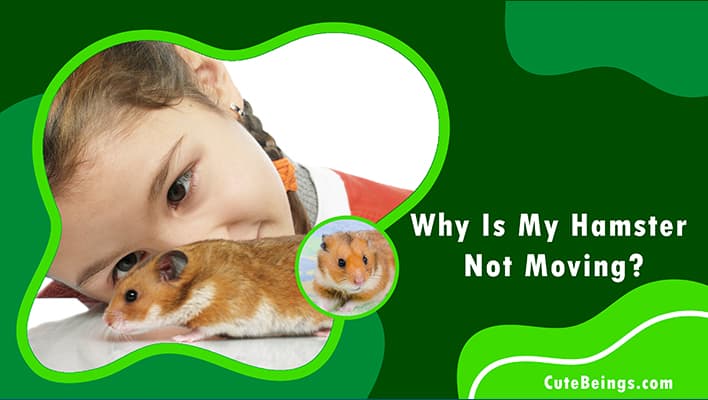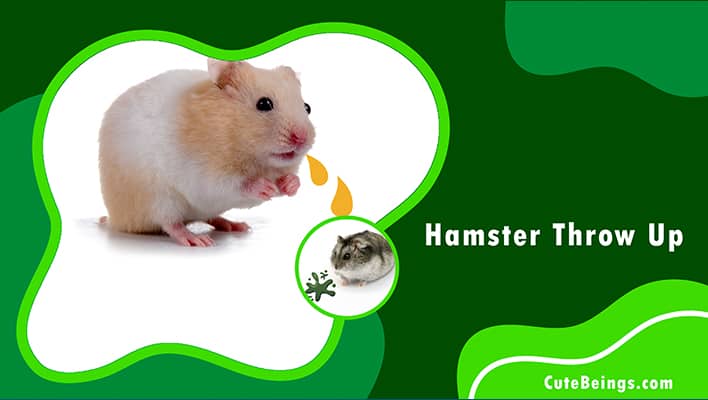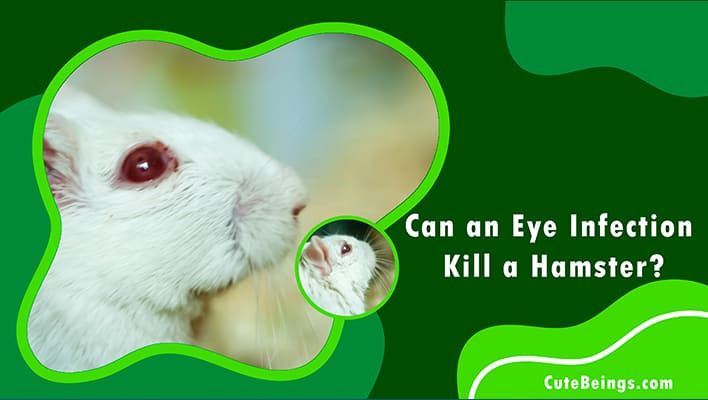Hamster wet tail is a serious sickness among hamsters which has a high death rate even identified early and treated. “Wet tail” name was given from the symptom of wetness around the hamster’s tail area due to the diarrhea and bacterial infection is causing this severe diarrhea.
Table of Contents
The Most Affected Hamsters
Hamsters from any breed or any age can suffer from wet tail. But there are some specific criteria which could mean the ability of having the sickness. Teddy bear hamster is on the top of the list due to its long fur and young Syrian hamsters who are under 12 weeks of age are also at high risk of having the disease. Older hamsters also have a high risk regardless the breed as they find it hard to clean themselves regularly due to their age. Roborovski dwarf hamster is the least likely to have the wet tail disease.
Causes Of Wet Tail
-
Stress: stress in young hamster is identified as the most common and the main reason. When young hamsters have been shifted to a new home or when they are separated from their mothers they can easily suffer from stress. Even the hamsters that come from a litter been moved to homes in very young age or the hamsters who suffer from other disturbances such as animal assaults, noisy backgrounds or handling too soon can suffer from stress.
-
Dirty living spaces: in some situations hamster could be living in unpleasantness for some period. It also can cause bacterial infections in hamster’s system and lead to wet tail.
-
Bacterial problems: bacterial growth in hamster’s stomach causes wet tail and it is very similar to stomach bugs in human beings. This bacteria overgrowth can cause a foul odor and unlikable symptoms.
-
Poor diet: too many treats can cause diarrhea and lead to wet tail condition if the hamster is kept in unhygienic conditions for longer period.
-
Medication issues: when treating other medical issues your vet might prescribe antibiotics and antibiotics could cause upset stomachs in hamsters. This may rise to wet tail condition but this can be considered as the least common cause as in many situations hamsters do not require antibiotics for their treatments.
Symptoms Of Hamster Wet Tail
It is vital that you get to know all the wet tail symptoms. If your hamster starts to show wet tail symptoms you can identify it as you are aware of the symptoms and you can seek medical advice as soon as possible.
If you suspect it’s wet tail disease, you should not wait thinking that your hamster will get well the next day because your hamster will be suffering and smelly and there is a high possibility that your hamster won’t survive even before you take him to the vet. Urgent treatments are necessary so your pet hamster could recover from the illness.
-
Watery diarrhea: you could observe throughout the hamster’s cage or in puddles around the toilet corner of the cage.
-
An unclean bottom: if your pocket pet is suffering from the wet tail disease your pet will have a smelly and dirty bottom which could be black or brown and very muggy.
-
A stinking odor: if your small pet smells strongly or very bad than normal you should immediately take your pet to the veterinarian.
-
Refusing to eat or drink: loss of appetite will cause several health conditions. Refusing to drink water may cause dehydration so you need to get a clean syringe or a dropper from your vet and give water more often during the period of its treatments. Dehydration is very bad for hamsters and it can lead them to die quickly.
-
Lethargy: your hamster would sleep more and may have weakness of limbs, loss of physical strength and activity. So observe well your hamster’s behavior.
-
Messy or unclean coat: this clearly shows a sign of general illness
-
Hamster would round its back by bending forward and drawing the shoulders forward and won’t be able walk properly.
-
Symptoms of stress or infection: may show the signs such as dirty or running nose, sticky or watery eyes and discharge from genitals or ears.
Prevention Is Better Than Cure
The best thing you can do is to prevent this deadly disease. When you are choosing a hamster, you need to check properly for its condition. Check for signs of health issues, eyes which are widely opened and confirm there is no any discharge, grooming, clean coat, active behavior and most importantly make sure that the bottom is dry and clean. Never purchase a hamster which is housed with sick hamsters due to bacterial infections.
You can simply prevent this sickness if you can reduce the stress of hamster. Before you bring your new hamster home from pet shop make sure the hamster’s cage is completely ready. This will help your hamster to enjoy a smooth move to its new home.
In first few days keep the handling to the minimum and that will give your hamster enough time to adjust to the new environment well. Place the hamster cage in a quiet room and keep away from your other pet dog or cat so your hamster will not feel any danger from them.
Do a spot clean daily and use disinfect weekly to keep the cage clean. Provide pro-biotics and a quality fresh food to keep away the risk of contagion.
Issues With Home Treatments
You may have heard or seen wet tail drops online or in the pet store and you might think these drops as an alternative treatment to your veterinarian’s visit. These solutions are hardly ever effective and would waste your valuable time.
Usually most wet tail drops hold antibiotic which would aid to treat lawsonia intracellularis and diarrhea. But if your hamster is suffering from this sickness these wet tail drops won’t be enough save your hamster.
With antibiotics your pet would need extra special care and antibiotics that wet tail drops contain could be the incorrect antibiotic for your pet hamster.
If your pocket pet is sick, it’s not a good idea to purchase wet tail drops online. You must always seek your vet’s advice before commencing treatments. Treating at home with the commercially recommended products won’t do any good to your hamster and these products may not be effective as you think and by doing this you are risking your hamster’s life.
Only the vet can give your hamster the best chance to recover from wet tail disease so seek your vet’s advice and act quickly to treat your pet.
Things To Do When Your Hamster Develops Wet Tail Disease
If you notice the symptoms of wet tail disease, your vital first step should be taking your hamster to the veterinarian to examine your hamster. After examining your vet will probably prescribe antibiotic to start with and would recommend subcutaneous fluids to help with hydration. If your hamster is not eating your vet even recommend syringe feeding.
When symptoms start showing you need to take your hamster to your vet within 24 hours for best prediction. If you are unable to do the visit immediately, check with your vet whether providing a quiet surrounding and syringe feeding could keep hydration and electrolyte balance will assist until your hamster is examined.
Extra special care must be taken in sanitizing the surroundings and the things used by your hamster as wet tail sickness is based on a flare-up of bacteria. If your sick hamster is kept with another hamster you need to separate the other hamster quickly to stop the spread of bacteria to each other. Always remember take security precautions when handling your small pet, its habitat and its accessories and always wash your hands thoroughly when you finish.
After Your Vet Visit
Once you are back from the vet you need to keep the hamster in a clean cage and observe it closely. You need to isolate your infected hamster from any other healthy hamster and make sure your cloths don’t come into contact with your pet. Always change your clothes and wash them thoroughly. Wear gloves when you are handling or feeding your pet to prevent the infectivity.
Keep your hamster in a warm, comfortable and quiet place and keep away from other pets or animal and from direct sunlight.
When you clean the cage, using of boiling water may help to kill the germs. Replace all the bedding before you put the hamster back to the cage and wipe all the bars or the tank sides. Always wash your hamster’s dishes before feeding and provide enough clean water to maintain hydration.
Apart from all these methods, watch the behavior carefully and frequently. Always give the antibiotics on time and use the dropper or the syringe to give water to your hamster. If you are not sure about your hamster’s water intake, using of syringe or dropper will help to maintain the hydration.
Other Possible Clarifications
As for any other sickness, your hamster may show symptoms similar to wet tail without having wet tail disease. So that’s why it is very important that you get your hamster checked by an exotic vet to make sure the correct illness.
-
Uterine problems: this happens in female hamster especially in older ones. They show symptoms such as a smelly brownish or yellow discharge, bleeding in genitals area, an inflamed or lumpy stomach, protrusion from genitalia and symptoms won’t improve with antibiotics. Your pet would seem to be healthy and bright and these would cause by obstruction, infection, injury, tumor or birthing problems.
-
Urinary tract infection: this can be seen mainly in older female hamsters but could be seen in any hamster of any age. Symptoms to be seen such hamsters are smelly urine, blood with urine, dirty yellow or brownish stains around genitals area, excessive drinking, tangled coat, rejection of food, exhaustion and screeching when going to toilet.
-
Poor diet: poor diet can cause sticky, soft or the runs without a strong smell or wet tail symptoms. You may notice diarrhea in the cage and a quiet hamster without the need of food. At this stage it is not severe but this could lead to wet tail. So reduce greens and serve them only as a treat and never feed human foods to your pet.
-
Sitting on their own mess: normally has a damp urine smell and poo stuck to hamster which is not runny or soft. You can use a baby wipe to clean your pet and then your hamster will smell better and improve. Clean the cage thoroughly to avoid such incidents.
Final Thoughts
Hamster wet tail is a very dangerous illness and it is the mostly seen hamster disease at present. So it’s always a good thing to aware of symptoms.
With great care some hamsters make a full recovery from this disease. The faster you act with proper treatments can save your pet just in time and always try to prevent the disease than looking for solutions for the disease.
Further Reading
Did you notice that your hamster is moving slowly ? Why don’t we keep reading to find out more about the possible reasons for this behavior.

Hello, my name is James and I’ve been caring for tiny pets for over 14 years with a passion. I enjoy passing on my expertise to other individuals in order for them to have the same amount of enjoyment as I do.




